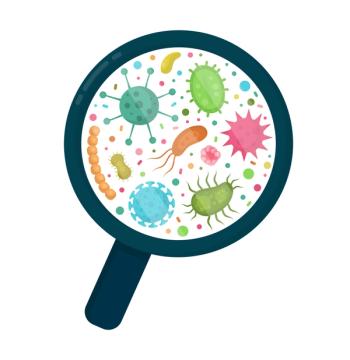
A new study has demonstrated a practical solution for the reliable compound-specific isotope analysis (CSIA) of trace-level pollutants in complex environmental samples, using 2DGC-IRMS.


Advancing Gas Chromatography: Exploring the Power of Silver(I) Ion-Based Stationary Phases for Olefin/Paraffin Separation

A new study has demonstrated a practical solution for the reliable compound-specific isotope analysis (CSIA) of trace-level pollutants in complex environmental samples, using 2DGC-IRMS.

LCGC Europe spoke to Giorgia Purcaro from the University of Liège in Belgium, about her work investigating mineral oil hydrocarbons (MOH) using GCxGC and the practical advantages that a novel LC–GCxGC–TOF-MS/FID method offers the analyst.

"GC Connections" presents the column's annual review of new developments made in the field of gas chromatography, made available in 2022–2023.

The 20th International GC×GC Symposium will take place from 28 May–1 June 2023, and will be held in Canmore, Alberta.

GC×GC is now a well-established technique, but it is still underutilized in many settings.

This article is intended to begin demystifying GC×GC by presenting a simple explanation of how it works and its major benefits.

Understanding the relationship between selectivity and retention is key to realizing excellent gas chromatographic separations.

Two-dimensional gas chromatography (GC×GC) and chemometrics are leading the way in new strategies on multivariate data analysis. Using GC×GC in untargeted analysis reveals how far the technique has advanced the field of separation science.

Comprehensive two-dimensional gas chromatography (GC×GC) is becoming increasingly popular, but is still not used as commonly as it could be. That likely means that the technique is still not widely understood. This article is intended to begin demystifying GC×GC by presenting a simple explanation of how it works and its major benefits.

In this extended special feature to celebrate the 35th anniversary edition of LCGC Europe, key opinion leaders from the separation science community explore contemporary trends in separation science and identify possible future developments.

When should multidimensional GC approaches be used for analyzing complex samples and analytes?

A TD–GC×GC–TOF-MS method for malodour detection

New approaches to sample preparation are being developed for microbial metabolomics to address the inherent complexity of this type of analysis.

The benefits that GC×GC–TOF-MS with tandem ionization and chemometrics offer for fragrance profiling and authenticity evaluation.

This month we interview Katelynn Perrault, Associate Professor of Forensic Sciences and Chemistry at Chaminade University of Honolulu in Honolulu, Hawaii, about her work translating 1D GC methods to effective comprehensive 2D GC (GC×GC) methods for forensic applications and the benefits that GC×GC offers the analyst.

LCGC Europe spoke to Yada Nolvachai about a new approach that offers “super-resolution” for comprehensive two‑dimensional gas chromatography (GC×GC) methods.

In the present research, similar chromatography fingerprints were obtained using finely-tuned cryogenic-modulation (CM) and flow-modulation (FM) comprehensive two-dimensional gas chromatography–mass spectrometry (GC×GC–MS) experimental conditions.

In gas chromatography, heating the sample in the inlet can lead to sample losses and loss of quantitative reproducibility, but these problems can be avoided using cold sample introduction. This article describes various types of cold injection and how they can benefit the analyst.

This critical review describes recent applications and instrumental trends in comprehensive two-dimensional gas chromatography (GC×GC), with particular (though not exclusive) attention to the period 2018–2019 and that the concept of GC×GC is inherently simple. The maturity of GC×GC and future developments are also discussed.

In this instalment of “GC Connections”, the advantages of multidimensional chromatography with HPLC as the first dimension and GC as the second are discussed.

GC–MS is considered the gold standard in forensic trace evidence analysis because of its ability to chromatographically separate and analyze components in mixtures. Although GC×GC–MS has been used extensively in the oil and petroleum and flavour and fragrance industries, it has not been fully explored in the forensic sector. However, forensic scientists often encounter highly complex samples that would benefit from the capabilities of GC×GC–MS, such as, sexual lubricants, automobile paints, and tyres. GC×GC–MS analysis can allow for the deconvolution of coeluted components while providing increased sensitivity of minor components to help benefit any forensic laboratory.

LCGC Europe spoke to Guilherme L. Alexandrino from the University of Copenhagen, Denmark, about the benefits of combining a modern “pixel-based” chemometrics technique with comprehensive two‑dimensional gas chromatography (GC×GC) in petroleomics applications.

This proof-of-principle study shows that polymer-based sorptive extraction probes, coupled with secondary focusing by thermal desorption and analysis by flow-modulated GC×GC–TOF-MS/FID, can be used to separate and identify flavour compounds in milk. As well as comparing the profiles of dairy and non-dairy milks, this article highlights the practical benefits of this sampling procedure, the ability of two-dimensional GC to physically separate components that would coelute in one-dimensional GC, and the use of software tools to improve workflow.

Multidimensional chromatography, or comprehensive chromatography, is a well-established technique for the analysis of complex mixtures. However, the technique is often perceived as highly complex and difficult to put into practice for routine applications. Nonetheless, the technique provides exceptional potential for addressing challenging separations. The addition of a dilution factor allows multidimensional chromatography to provide a high level of flexibility and selectivity. The dilution effect is achieved by using a column chemistry format compatible with large flow rates, which now offers the option of large volume injection without volume or mass overload issues. This novel solution can reduce or eliminate the need to add a solvent exchange step, such as evaporation or reconstitution, which significantly reduces the most time-consuming part of the sample preparation process.

The concept of (heart-cutting) multidimensional gas chromatography (MDGC) was introduced shortly after the invention of gas chromatography (GC). In that first experiment, the term “two-stage” was used to define the multidimensional process in applications involving the heart‑cutting of four hydrocarbon fractions, ranging from C5 to C8. The latter were separated first on a nonpolar packed column, and then on a polar one. A rather complex combination of valves enabled two-dimensional (2D) analysis. The great potential of the approach became immediately evident.